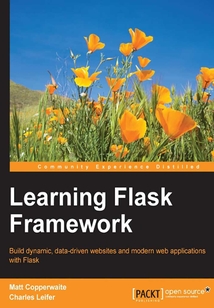目錄(91章)
倒序
- 封面
- 版權頁
- Credits
- About the Authors
- About the Reviewers
- www.PacktPub.com
- Support files eBooks discount offers and more
- Preface
- What this book covers
- What you need for this book
- Who this book is for
- Conventions
- Reader feedback
- Customer support
- Chapter 1. Creating Your First Flask Application
- What is Flask?
- Setting up a development environment
- Installing Python packages
- Creating your first Flask app
- Introducing the blog project
- Summary
- Chapter 2. Relational Databases with SQLAlchemy
- Why use a relational database?
- Introducing SQLAlchemy
- Creating the Entry model
- Retrieving blog entries
- Building a tagging system
- Making changes to the schema
- Summary
- Chapter 3. Templates and Views
- Introducing Jinja2
- Creating a base template for the blog
- Creating a URL scheme
- Adding pagination links
- Enhancing the blog app
- Summary
- Chapter 4. Forms and Validation
- Getting started with WTForms
- Using flash messages
- Saving and modifying tags on posts
- Serving static files
- Summary
- Chapter 5. Authenticating Users
- Creating a user model
- Installing Flask-Login
- Creating user objects
- Login and logout views
- Accessing the current user
- Restricting access to views
- Sessions
- Summary
- Chapter 6. Building an Administrative Dashboard
- Installing Flask-Admin
- Exposing models through the Admin
- Managing static assets via the Admin
- Securing the admin website
- Reading more
- Summary
- Chapter 7. AJAX and RESTful APIs
- Creating a comment model
- Installing Flask-Restless
- Creating comments using AJAX
- Loading comments using AJAX
- Reading more
- Summary
- Chapter 8. Testing Flask Apps
- Unit testing
- Flask and unit testing
- Test-friendly configuration
- Mocking objects
- Logging and error reporting
- Read more
- Summary
- Chapter 9. Excellent Extensions
- SeaSurf and CSRF protection of forms
- Creating Atom feeds
- Syntax highlighting using Pygments
- Simple editing with Markdown
- Caching with Flask-Cache and Redis
- Creating secure stable versions of your site by creating static content
- Asynchronous tasks with Celery
- Creating command line instructions with Flask-script
- References
- Summary
- Chapter 10. Deploying Your Application
- Running Flask with a WSGI server
- Securing your site with SSL
- Automating deployment using Ansible
- Read more
- Summary
- Index 更新時間:2021-07-30 10:18:50
推薦閱讀
- Java應用開發與實踐
- Learning Bayesian Models with R
- C語言程序設計
- 高級C/C++編譯技術(典藏版)
- Quarkus實踐指南:構建新一代的Kubernetes原生Java微服務
- Symfony2 Essentials
- Spring MVC+MyBatis開發從入門到項目實踐(超值版)
- Java EE企業級應用開發教程(Spring+Spring MVC+MyBatis)
- 深入理解BootLoader
- Using Yocto Project with BeagleBone Black
- 量子計算機編程:從入門到實踐
- 讓Python遇上Office:從編程入門到自動化辦公實踐
- Building Microservices with Go
- Mastering Machine Learning with scikit-learn
- C++ Data Structures and Algorithm Design Principles
- 計算機應用基礎
- Python程序設計現代方法
- Swift編程實戰:iOS應用開發實例及完整解決方案
- R Data Visualization Cookbook
- Microsoft Hyper-V PowerShell Automation
- Visual FoxPro程序設計教程(第3版)
- Go Programming Blueprints
- HTML5+CSS3從入門到精通(微課精編版)
- Machine Learning with TensorFlow 1.x
- 寫給風控師的實操手冊(全2冊)
- 圖解交互設計UI設計師的必修課
- Java設計模式(第2版)
- 深入探索JVM垃圾回收:ARM服務器垃圾回收的挑戰和優化
- Akka實戰:快速構建高可用分布式應用
- Python程序設計


